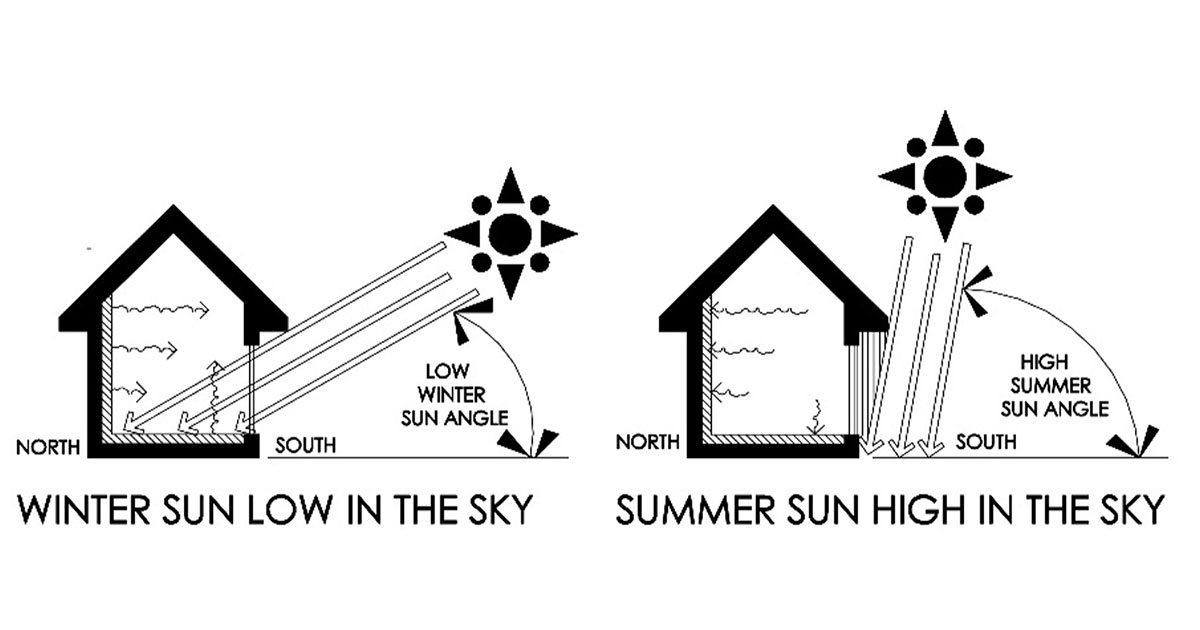Cool in summer, warm in winter, and bright year-round. Both passive and active solar strategies contribute to delightful, comfortable homes.

Debbie Coleman
Architect, Sun Plans; Chair, Solar Buildings Division, American Solar Energy Society
Efficiency-first strategies include thoughtful choices in design, materials, and equipment. Low-energy homes require fewer solar panels. Once the solar panels are installed, they generate electricity from sunlight, providing a free source of energy.
A small solar system can fit easily on a porch, garage, or pergola. The smaller cost leaves money to spend on batteries, which store excess solar energy to use during the night, cloudy days, and natural disasters that disrupt the electrical grid. If solar homes are connected to the electrical grid, they can still draw extra power if they need more electricity than the panels produce and the batteries can store.

Efficiency-first home strategies
- Design or select a home based on the sun’s orientation and seasonal movement. Minimize west-facing glass to reduce summer heat gain and maximize south glass to increase free heat from the low winter sun.
- Shade south-facing windows with overhangs and awnings, windows on the east and west with porches or tall trees, and windows that receive unwanted direct sun with interior cellular shades.
- Evaluate and test the home by a trained professional to identify specific air leaks.
- Caulk ductwork, stud top plate holes, and the foundation to framing to seal in warm winter air and keep out hot, humid summer air, along with smoke, dust, pollen, and insects.
- Add extra loose-fill insulation in easy-to-access attics, and rigid insulation on the exterior when residing. Add spray foam beneath the roof decking if cooling equipment cannot be moved inside.
- Vent attics and keep heating and cooling equipment inside. In hot climates, use light-colored roofs.
- Select right-sized high-efficiency heating and cooling systems. Oversizing can challenge humidity removal. Include fresh air systems for healthy indoor air, especially if gas appliances are used.
- Incorporate concrete, brick, stone, and tile to absorb heat, which minimizes interior temperature extremes year-round. The home’s construction materials function as a battery.
- Install photovoltaic (PV) solar panels on the roof, porch, pergola, or ground to create electricity and to charge electric vehicles. Solar installers can offer options for solar panels and batteries.
Resources for assistance
Local architects, designers, builders, raters, solar installers, and non-profit organizations can assist. American Solar Energy Society, with 20,000 members, hosts the free National Solar Tour annually. GreenHome Institute offers free checklists, educational webinars, and sustainable home videos. Building Performance Institute certifies and recommends home energy professionals. Solar United Neighbors can help evaluate solar system proposals. Database of State Incentives for Renewables & Efficiency® lists renewable energy incentives.

